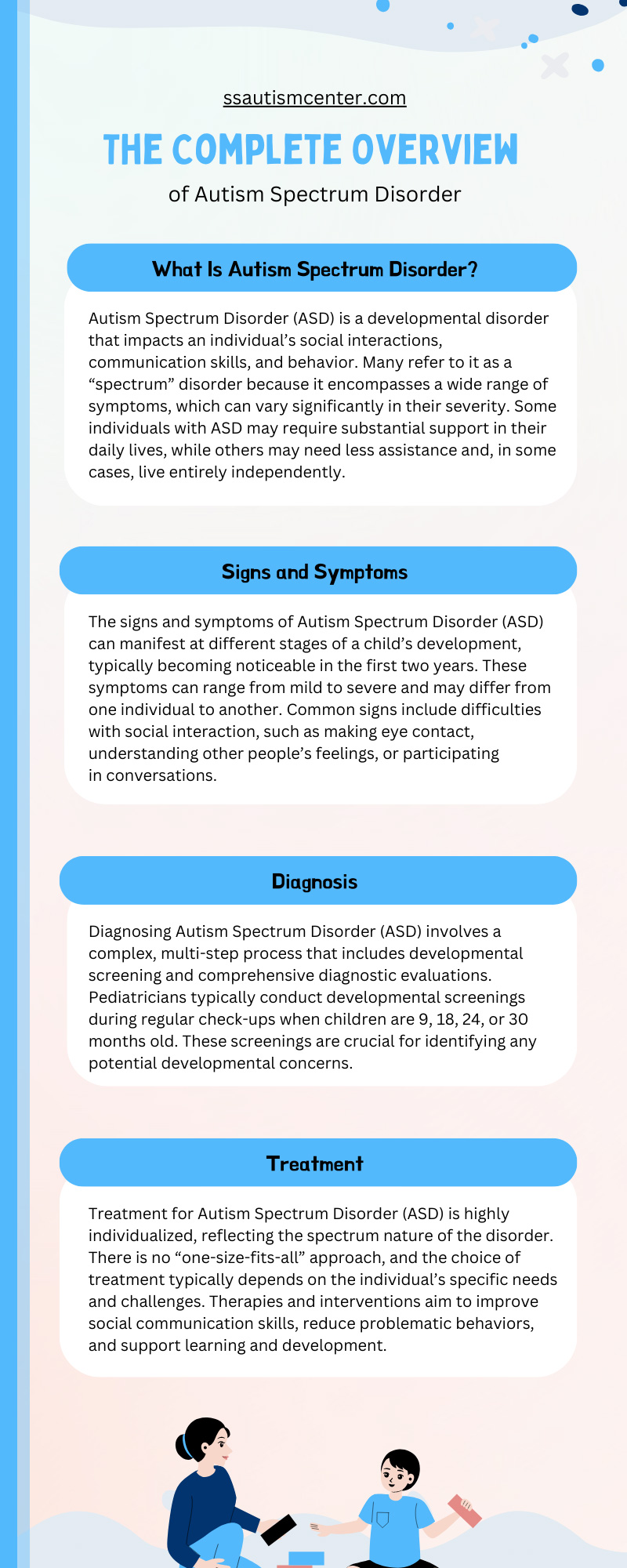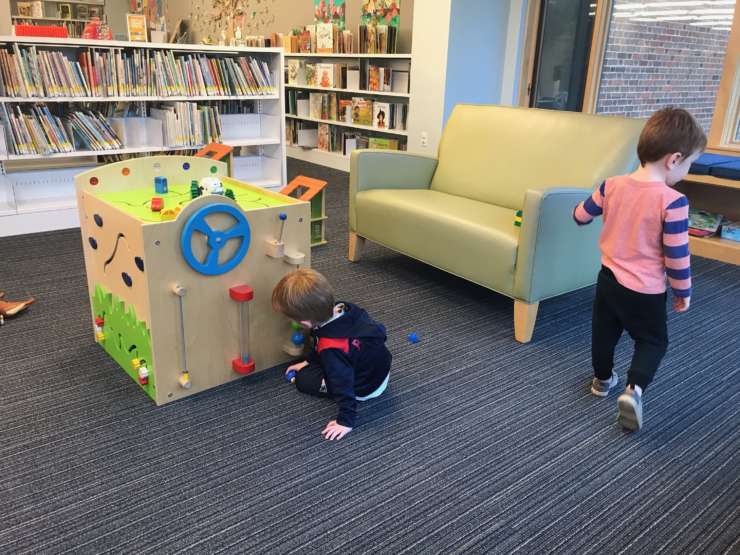Autism Spectrum Disorder (ASD) is a complex, multi-faceted condition affecting individuals worldwide in unique and varied ways. We’ve created the complete overview of Autism Spectrum Disorder to explore its definition, symptoms, and treatments. Our intention is to deliver information and shed light on the lived experiences of those with ASD, empowering readers with a nuanced understanding of this disorder. As we delve into this topic, we hope to dispel myths and encourage empathy and support for those living with ASD.
What Is Autism Spectrum Disorder?
Autism Spectrum Disorder (ASD) is a developmental disorder that impacts an individual’s social interactions, communication skills, and behavior. Many refer to it as a “spectrum” disorder because it encompasses a wide range of symptoms, which can vary significantly in their severity. Some individuals with ASD may require substantial support in their daily lives, while others may need less assistance and, in some cases, live entirely independently. Medical professionals characterize the disorder by its distinctive strengths and differences, making each individual’s experience with autism unique. Understanding ASD is crucial in fostering a more inclusive and empathetic society.
Signs and Symptoms
The signs and symptoms of Autism Spectrum Disorder (ASD) can manifest at different stages of a child’s development, typically becoming noticeable in the first two years. These symptoms can range from mild to severe and may differ from one individual to another. Common signs include difficulties with social interaction, such as making eye contact, understanding other people’s feelings, or participating in conversations. Individuals with ASD may also exhibit repetitive behaviors, such as repeating words or phrases, constant rocking, or an obsessive interest in certain topics. Some may experience sensory sensitivities, finding certain sounds, tastes, or textures overwhelming. It’s important to remember that these symptoms can also occur in individuals without ASD, so a professional evaluation is critical for a definitive diagnosis.
Diagnosis
Diagnosing Autism Spectrum Disorder (ASD) involves a complex, multi-step process that includes developmental screening and comprehensive diagnostic evaluations. Pediatricians typically conduct developmental screenings during regular check-ups when children are 9, 18, 24, or 30 months old. These screenings are crucial for identifying any potential developmental concerns. The pediatrician will refer the child to a specialist for a more detailed evaluation if they display signs of ASD or other developmental delays. A team of specialists performs the comprehensive diagnostic evaluation, including psychologists, neurologists, and speech and language therapists. This in-depth assessment involves analyzing the child’s behavior and development, conducting interviews with parents or caregivers, and possibly genetic testing or neurological imaging. It’s important to highlight that medical professionals can reliably diagnose ASD in children as young as two months old, but many children may not receive a final diagnosis until older. This process can be challenging and emotional for families, but obtaining a diagnosis is a critical step that opens the doors to targeted support and intervention services.
Treatment
Treatment for Autism Spectrum Disorder (ASD) is highly individualized, reflecting the spectrum nature of the disorder. There is no “one-size-fits-all” approach, and the choice of treatment typically depends on the individual’s specific needs and challenges. Therapies and interventions aim to improve social communication skills, reduce problematic behaviors, and support learning and development. Medical professionals widely use behavioral therapies, such as Applied Behavior Analysis (ABA), to promote positive behavior and social interaction. Speech and language therapy can support communication skills, while occupational therapy helps with daily living skills. While not a cure, pharmacological treatment can manage specific symptoms, such as hyperactivity or anxiety. Furthermore, educational interventions are crucial in supporting academic success and social functioning. Parent training can also be beneficial in equipping parents with strategies to support their child’s development and manage behavioral challenges. It’s important to note that treatment effectiveness can vary from person to person, and the best outcomes are often achieved with early, tailored interventions that address the individual’s unique needs.
Early Intervention
Early intervention refers to the provision of specialized support and services for children with developmental delays or specific health conditions, such as Autism Spectrum Disorder (ASD), at the earliest possible stage. The goal of early intervention is to enhance the child’s development, reduce the potential for the emergence of secondary difficulties, and support families in promoting their child’s skills during everyday routines and activities. Early intervention programs often focus on improving social communication, language, play skills, and behavioral adaptability in children with ASD. The benefits of early intervention are manifold. It has been shown to improve outcomes for children with ASD significantly, fostering enhanced social interaction, communication skills, cognitive development, and academic achievement. Furthermore, early intervention also helps families better understand and support their child’s specific needs. Although ASD is a lifelong condition, early intervention can provide a strong foundation for future learning and development, empowering children with ASD to lead fulfilling, productive lives.
Helpful Tips
Navigating life with a child who has Autism Spectrum Disorder (ASD) can be challenging, but with the right strategies and support, families can help their child thrive. Remember that every child is unique, and what works for one might not work for another. Customizing strategies based on your child’s specific needs and interests is important. Consistency and routine can provide a sense of security for children with ASD, helping them understand and navigate their world. Create and stick to a regular schedule and use visual aids like charts or storyboards to explain changes beforehand. Use your child’s special interests to connect with and teach them new skills. Keep communication clear and simple. Use short sentences, visual aids, and concrete examples when explaining new concepts. Lastly, remember that it’s okay to seek help when needed. Join support groups, connect with other parents who understand your journey, and contact healthcare professionals and therapists for advice and guidance.
Now that you have a full overview of Autism Spectrum Disorder, you can better understand this condition. By understanding the signs, symptoms, and various treatment options, we can collectively foster a more inclusive society that supports and uplifts individuals with ASD. Contact South Shore Autism Center today if you’re looking for an autism center in Massachusetts. We hope to contribute to a future where everyone values and respects every individual for who they are, regardless of their differences.





Comments (0)